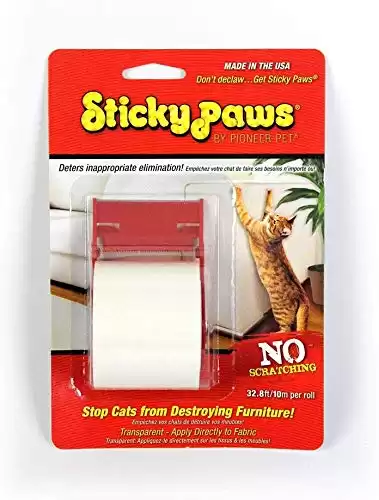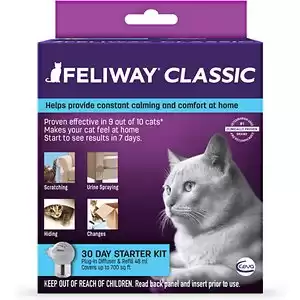As with any animal, a cat can only react to the environment and the situation that they’re in. Since they cannot change their environment themselves, when our cats start to exhibit behaviors that aren’t pleasant or wanted, it’s time for their caretakers to be aware and take notice.

Sleep time is a precious time for everyone, so when it’s interrupted by our cats – it can be a tough situation to deal with since they don’t exactly understand how we’re feeling and we don’t understand what’s exactly bothering them.
So how can cat owners deal with cats that won’t let them sleep? Depending on what type of attention-seeking behaviors the cat is exhibiting – there are a few ways to start curbing these types of behaviors. The first is to determine the severity and source of the offending behaviors. The second is to modify the environment in a way that’s different enough so our felines can’t find previous behavioral triggers. The third is to replace the offending behavior or habit with a new one to cement the change.
Recognizing Cat Night Time Behavior
Cat behaviors can be vast and can vary from cat to cat, so it’s important to observe and see what they’re actually doing that’s caused all the ruckus at night. The reason to do this is to see where your cat falls in terms of the boredom and separation anxiety spectrum and to decide the method to employ to solve these issues.
Again, cat owners may find that the behaviors will likely fall into one of these two categories:
| Boredom (negative behaviors associated with lack of stimulation) | Separation Related Problems (SRP) or Separation Anxiety (negative behaviors associated with being separated from the cat’s attached person) |
|---|---|
| – Roughhousing with other cats/animals, or destructive behavior – Knocking stuff around, taking things out of drawers and cabinets – Constant noises and cats fiddling around with toys, bags, or plastic bags – A unpredictable amount of energy at night time. Sometimes being extremely active early in the night and other times in the middle of the night. – Excessive vocalization and meows | – Destructive behavior – Excessive vocalization – Urination in inappropriate places – Depression-apathy – Aggressiveness – Agitation-anxiety – Defecation in inappropriate places – General attention-seeking behaviors |
As seen in the above chart, separation anxiety and boredom have a lot of overlap. It’s sometimes difficult to tell the two apart but separation anxiety is more about the cat’s development and boredom is more about the cat’s energy levels.
In a 2019 questionnaire survey (Identification of separation-related problems in domestic cats): 130 owners of 223 cats were surveyed as part of a master’s thesis to the Graduate Program in Behavior and Animal Biology of the Federal University of Juiz de Fora (UFJF) in Brazil. Among the sampled cats, 13.45% (30/223) met at least one of the behavioral criteria for SRP (separation-related problems or separation anxiety).

Although the survey is meant as a starting point for further deeper investigative science, some of the data that came out of the survey was quite interesting. Through the questionnaire, there seem to be some environmental factors that can make cats more prone to develop separation anxiety problems. These factors are:
- number of female humans in the house – there seemed to be a relationship between the number of female residents and a higher likelihood of the cat having separation anxiety behavior. Previous findings in dogs reported that as the number of females in the house increased, so did the likelihood of the dog developing SRP.
**There can be three interpretations of this information:
-First, It’s possible that female pet owners tend to give in more to their pets, or have a higher likelihood to spoil their pets, therefore increasing the chances of reinforcing these behaviors.
-The second plausible reason is that women have a higher perception of their pets’ behavior and body language, therefore, potentially over providing to their pets.
-Third, women show more attachment to their pets than male owners – therefore, more likely to respond to their pets needs and wants. - frequency and number of daily hours the cat is left alone – cats that were left alone (without any human or animal contact) for long periods of time or very often tended to be reported to have signs of SRP.
- the lack of environmental enrichment – in the survey, SRP behaviors were much more likely to be reported if the cats did not have sufficient environmental stimulation. Some of the SRP behaviors were related to:
-no access to toys
-no access to whole house
-no other animal in the house
-no outdoor or outdoor alternative access - absence of other animals in the house – there was a tendency for owners reporting signs of SRP if the cats did not live with other animals at home. It’s possible that because of the exclusive cat to owner interactions, owners with a single cat can either spoil their cats or their cats don’t learn ways of self-control and social cues from the other animals.
Responsible cat ownership means that we have to strive to understand all of our cat’s needs. While more research is needed to have more clarity, a lot of this information also implies that boredom and lack of stimulation can lead to worsening of those behaviors and develop into separation anxiety.
Help Your Cat be Calm at Night
The survey has helped shed some light on what might cause boredom to become separation anxiety and what solutions may be available.

Some of these solutions include:
- Environmental enrichment – play, catification of the space (click the link to see how I catify on a budget!), and general cat-focused living area.
- Getting a companion for your cat – cats that have a companion are much more behaviorally well-rounded.
- Increased meaningful interactions with your cat – more interactive play, better routines and activities that can challenge them.
Specific Methods To Stop a Cat From Going Crazy at Night
Despite not having the full picture, thanks to the continual research done by veterinarians, scientists, and researchers, it allows cat owners to have more knowledge to help their pets at home. As a result, it allows cat owners to develop their own ways to curb and fix these negative behaviors.
Right now, your cat has an engrained habit to disturb your sleep because you allowed him to. It’s time to change it.
Once cat owners have determined which side of the spectrum their cat is on (boredom or more separation anxiety behaviors) – it’s time to put some action into place. Note that separation-related problems can be a bit more ‘sticky’ than boredom behaviors, meaning, it can take more time for the cat to break out of its habit.
Remember, as with any habit – the most effective way to break a habit is to replace it with another habit (hopefully with a more positive, progressive one).
If your cat is exhibiting boredom and energy mismanagement behaviors:
- Decide on a feeding schedule. As feeding schedules allows cat owners to predict and guide their cat’s energy levels throughout the day. Especially effective for those cats with constant energy.
- Implement a play regimen of at least 20-30 minutes a day. Same time every day. Preferably before sleep.
- End the play session with a mealtime to signal the end and the start of a wind-down process.
- Repeat until your cat or cats are completely adapted to the new routine/habit.
If your cat is exhibiting separation anxiety or separation-related problems:
- Drastically change the environment that your cat is in. Changing position of furniture is usually enough. It lets them reset their triggers and behavioral loops.
For example, I’ve had experience with fostering a cat that loved to jump on top of the scratch post near the door (which is gated so that he can’t get in) and yell constantly to try to get me to open the door. The easy solution was just to move the scratching post to the other side of the room. He almost immediately stopped vocalizing, which allowed me to do the next steps to ensure he doesn’t start again. - Similar to above, start to introduce more disciplined plans of feeding and play.
For the most optimal feeding and playing routines, click on the respective links:
How Often to Play With Your Cat
Scheduled Mealtimes For Your Cat - Repeat until they are adapted to the new routine/habit
As a final important note: other than the set times in which you interact with the cat (eating, playing, etc.), cat owners will need to learn to ignore their cat’s meows and calls. Responding or giving in to these calls will reinforce these behaviors which will set back their progress.
If the cat is incredibly persistent and makes a lot of noise, scratches, or bangs into the door or wherever they’re trying to get in – make that thing they’re banging into either very secure or uncomfortable for them to interact with.
For example,
- door stoppers are great for wobbly doors that cats like to shake
- putting double sided sticky tape on the door to make the door very uncomfortable to scratch
- securing the item or door with tape or safety locks
- use ear-plugs if you’re super sensitive to sound
Other Recommended Tools to Help With Negative Behaviors at Night
These products can help augment the methods and facilitate the cat’s adaptation to their new routine and habits. For the complete curated list of the most recommended products and toys, click here!
 Sticky Paws Pet Sticky Roll
Sticky Paws Pet Sticky Roll
When push comes to shove, this can be a good tool to our teach cats what areas are unacceptable to be on. This is for people that don't want certain furniture to be scratched up and for stubborn cats that are set in their ways scratching up a certain type of furniture or material.
 Feliway 30 Day Starter Kit
Feliway 30 Day Starter Kit
Feliway is a synthetic copy of the feline facial pheromone, used by cats to mark their territory as safe and secure. By mimicking the cat’s natural facial pheromones, Feliway creates a state of familiarity and security in the cat's local environment. As a result, Feliway can be used to help comfort and reassure cats while they cope with a challenging situation and help prevent or reduce the stress caused by a change in their environment.
